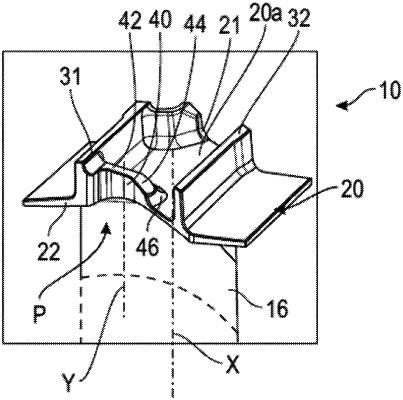| CPC F01D 5/142 (2013.01) [F01D 5/16 (2013.01); F05D 2260/96 (2013.01)] | 10 Claims |

|
1. A rotor vane for an aircraft turbine engine, the vane having an axis (A) of rotation when secured to a rotor and a stacking axis (X) and comprising a blade extending along the stacking axis between an internal platform and an external platform which bears at least one projecting wiper, said blade comprising an intrados and an extrados and said external platform comprising, on the side of said intrados and extrados, lateral edges configured to cooperate in a form-fitting manner with complementary lateral edges of adjacent vanes, these lateral edges each comprising an anti-wear coating, one of these lateral edges forming a hollow tip (P) comprising a bowl configured to receive said coating and also comprising a first concave cylindrical surface segment formed partly in said external platform and partly in a low wall which projects from this platform and which is connected to said at least one wiper, this first surface segment extending along and about a virtual axis (Y) parallel to said stacking axis (X), wherein:
said low wall has a thickness (E1) measured in a direction perpendicular to said virtual axis (Y), which is greater than or equal to 2.5 mm, and
said first surface segment has a height (H1) measured along said virtual axis (Y), which is equal to at least 150% of the thickness (E1) of the low wall.
|